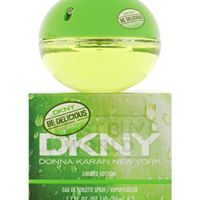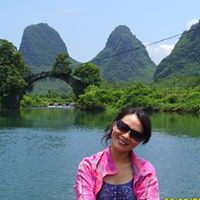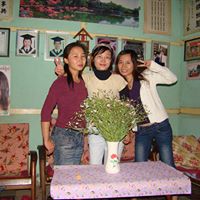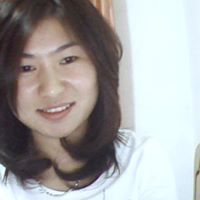Ling Zhang
age ~53
from Brea, CA
Ling Zhang Phones & Addresses
- Brea, CA
- Memphis, TN
- Collierville, TN
- Houston, TX
- Bala Cynwyd, PA
Medicine Doctors

Dr. Ling Zhang, Memphis TN - MD (Doctor of Medicine)
view sourceSpecialties:
Neurology
Address:
910 Madison Ave Suite 1031, Memphis, TN 38103
(901)4485364 (Phone)
(901)4485364 (Phone)
Languages:
English

Ling Zhang
view sourceSpecialties:
Clinical Pathology
Work:
Moffitt Medical GroupMoffitt Cancer Center Pathology
12902 Usf Magnolia Dr, Tampa, FL 33612
(813)7453001 (phone), (813)7458479 (fax)
12902 Usf Magnolia Dr, Tampa, FL 33612
(813)7453001 (phone), (813)7458479 (fax)
Education:
Medical School
Fujian Med Coll, Fuzhou City, Fujian, China
Graduated: 1982
Fujian Med Coll, Fuzhou City, Fujian, China
Graduated: 1982
Languages:
English
Description:
Dr. Zhang graduated from the Fujian Med Coll, Fuzhou City, Fujian, China in 1982. She works in Tampa, FL and specializes in Clinical Pathology.

Ling Zhang
view sourceSpecialties:
Physical Medicine & Rehabilitation
Work:
Health South Rehabilitation Hospital
7930 Northaven Rd, Dallas, TX 75230
(214)7068200 (phone), (214)7068380 (fax)
Star Health & Rehab PA
6715 Pemberton Dr, Dallas, TX 75230
(214)8087704 (phone), (214)9871475 (fax)
7930 Northaven Rd, Dallas, TX 75230
(214)7068200 (phone), (214)7068380 (fax)
Star Health & Rehab PA
6715 Pemberton Dr, Dallas, TX 75230
(214)8087704 (phone), (214)9871475 (fax)
Education:
Medical School
Tongji Med Univ, Wuhan City, Hubei, China
Graduated: 1982
Tongji Med Univ, Wuhan City, Hubei, China
Graduated: 1982
Languages:
English
Description:
Dr. Zhang graduated from the Tongji Med Univ, Wuhan City, Hubei, China in 1982. She works in Dallas, TX and 1 other location and specializes in Physical Medicine & Rehabilitation.

Ling Zhang
view sourceSpecialties:
Pathology
Anatomic Pathology
Hematology
Anatomic Pathology
Hematology

Ling Zhang
view sourceSpecialties:
Physical Medicine & Rehabilitation
Hematology
Anatomic Pathology & Clinical Pathology
Clinical Pathology/Laboratory Medicine
Hematology
Anatomic Pathology & Clinical Pathology
Clinical Pathology/Laboratory Medicine
Education:
China Medical University (1982)

Ling Zhang
view sourceSpecialties:
Anesthesiology
Education:
Xian Medical University, Xian, Shaanxi (1982)
Lawyers & Attorneys

Ling Jia Zhang - Lawyer
view sourceLicenses:
New York - Delinquent 2007
Education:
St. Louis University School of Law
Specialties:
Advertising - 34%
Corporate / Incorporation - 33%
Communications / Media - 33%
Corporate / Incorporation - 33%
Communications / Media - 33%

Ling Zhang - Lawyer
view sourceSpecialties:
Advertising
Corporate / Incorporation
Communications / Media
Communications / Media
Advertising
Corporate / Incorporation
Communications / Media
Communications / Media
Advertising
ISLN:
924295712
Admitted:
2007
Resumes

Ling Zhang New York, NY
view sourceWork:
Golden Touch Imports
Manhattan, NY
Oct 2011 to Feb 2014
Assistant Designer Necessary Objects
Long Island City, NY
May 2011 to Oct 2011
Assistant Designer Freelance, varied locations
Apr 2010 to May 2011 The Original Inc
Los Angeles, CA
May 2010 to Aug 2010
Assistant Designer V-fish Designs
Chicago, IL
Aug 2009 to Mar 2010
Design Intern
Manhattan, NY
Oct 2011 to Feb 2014
Assistant Designer Necessary Objects
Long Island City, NY
May 2011 to Oct 2011
Assistant Designer Freelance, varied locations
Apr 2010 to May 2011 The Original Inc
Los Angeles, CA
May 2010 to Aug 2010
Assistant Designer V-fish Designs
Chicago, IL
Aug 2009 to Mar 2010
Design Intern
Education:
The Illinois Institute of Art
Chicago, IL
Mar 2010
Bachelor of Fine Arts in Fashion Design
Chicago, IL
Mar 2010
Bachelor of Fine Arts in Fashion Design
Name / Title
Company / Classification
Phones & Addresses
President
Shijun International Inc
Nonclassifiable Establishments
Nonclassifiable Establishments
2225 W Commonwealth Ave, Alhambra, CA 91803
President
IVY HILL HOME INC
Whol Furniture
Whol Furniture
5548 Edison Ave, Chino, CA 91710
(909)6139191
(909)6139191
President
JENNY WANG, INC
6100 Corporate Dr STE 588, Houston, TX 77036
107 Cummins Ave, Cleveland, TX 77327
107 Cummins Ave, Cleveland, TX 77327
President, Director
NORTH AMERICA VALVE TECHNOLOGY CO
4807 Commercial Park Dr, Austin, TX 78724
3102 Produce Row, Houston, TX 77023
2305 Rodoo Dr, Austin, TX 78727
3102 Produce Row, Houston, TX 77023
2305 Rodoo Dr, Austin, TX 78727
Managing
Everspring Investment, LC
Real Estate Investment
Real Estate Investment
2925 Diamond Rdg Rd, Pomona, CA 91765
3641 Norwich Pl, Whittier, CA 91748
3641 Norwich Pl, Whittier, CA 91748
Bysling Enterprise, LLC
Rental Property Investment
Rental Property Investment
5548 Edison Ave, Chino, CA 91710
MR PANDA USA, LTD
Director, President
Ling's Buffet LLC
Eating Place
Eating Place
6730 Atascocita Rd, Humble, TX 77346
10310 Westpark Dr, Houston, TX 77042
(281)8520118
10310 Westpark Dr, Houston, TX 77042
(281)8520118
Us Patents
-
Method And System For Parallel Reconstruction In The K-Space Domain For Application In Imaging Systems
view source -
US Patent:7840045, Nov 23, 2010
-
Filed:Apr 19, 2007
-
Appl. No.:11/737527
-
Inventors:Junyu Guo - Drexel Hill PA, US
Eugene G. Kholmovski - Salt Lake City UT, US
Ling Zhang - Drexel Hill PA, US
Dennis L. Parker - Salt Lake City UT, US -
Assignee:The University of Utah Research Foundation - Salt Lake City UT
-
International Classification:G06K 9/00
-
US Classification:382128, 382131, 382132, 324307, 324309
-
Abstract:A method of performing parallel image reconstruction of undersampled image data in k-space. A defined partitioning of a k-space region into a plurality of segments is received. A segment of the plurality of segments is identified wherein data is sampled at less than a Nyquist rate. First imaging data is sampled at the Nyquist rate. A reconstruction coefficient is calculated for at least a portion of the identified segment using the sampled first imaging data. Second imaging data is sampled at less than the Nyquist rate. A value for a missing k-space sample in the identified segment is predicted using the calculated reconstruction coefficient and the sampled second imaging data. An image of the image area is defined using the predicted value and the received second dataset.
-
Automotive Grease Gun
view source -
US Patent:20060278660, Dec 14, 2006
-
Filed:Jun 8, 2005
-
Appl. No.:11/147205
-
Inventors:Ling Zhang - Rowland Heights CA, US
-
International Classification:G01F 11/00
-
US Classification:222262000, 222333000
-
Abstract:A shoulder supported, hand directed automotive grease gun in which a reciprocating piston transfers fluid from a supply tube to an outlet conduit. A battery powered motor and gear transmission rotate a disc on which is mounted an eccentric pin. The pin forcibly moves a piston holder between low friction parallel guides so as to advance the piston with its transferred fluid toward the outlet conduit. A first spring constantly biases the piston holder toward the pin so that the piston reciprocates rapidly as the disc rotates. An adjustable spring-loaded ball seal unit with an adjustable spring seat controls flow of the fluid. A fluid supply tube heating device alters fluid density to also control fluid flow. An auxiliary shoulder strap relieves pressure on an operator's wrist and transfers backpressure and tool weight to the operators body.
-
Digital Air Compressor Control System
view source -
US Patent:20070081902, Apr 12, 2007
-
Filed:Sep 28, 2006
-
Appl. No.:11/536049
-
Inventors:Ling Zhang - Rowland Heights CA, US
Ning Zhang - Taicang City, CN -
International Classification:F04B 49/10
F04B 49/06 -
US Classification:417032000, 417044200
-
Abstract:A digital air compressor control system is for creating a customized air compressor. The system includes microprocessor, power supply, electric sensors and electric valve. In general, digital control system includes four overall components, which may be present in a variety of electric-mechanical formulations. The first component is the microprocessor. It controls the system's or component's action. It receives signals and sends out action commands according to user requirements. Microprocessor directs most every component action. The second component is power control system. Under microprocessor control, the power control system can supply or stop supplying current to electric components allowing accurate functionality. The next component is sensors. They include pressure sensors and temperature sensors. The pressure sensor picks up the pressure data from the control pressure area. The sensor sends the signal to the microprocessor for processing, and issues appropriate commands that the designer programmed or that the user preset. The temperature sensor function is similar to the pressure sensor, one difference is that the signal comes from the control temperature area. The microprocessor receives these signals and sends commands to control power on or off; motor run or stop; valve open or close. Another component is the electric valve. These valves follow the microprocessor command to either open or close to allow the air tank to reach preset pressure. It also releases tube pressure air from the pump to tank.
-
Methods For Producing Crosslinkable Silyl Group-Containing Polyoxyalkylene Polymers
view source -
US Patent:20130060000, Mar 7, 2013
-
Filed:May 26, 2011
-
Appl. No.:13/696918
-
Inventors:Ling Zhang - Missouri City TX, US
Daniel A. Aguilar - Lake Jackson TX, US
Debkumar Bhattacharjee - Blue Bell PA, US
William A. Koonce - Pearland TX, US
Basudeb Saha - Missouri City TX, US -
Assignee:DOW GLOBAL TECHNOLOGIES LLC - Midland MI
-
International Classification:C07F 7/02
C08G 18/73
C08G 18/71 -
US Classification:528 67, 528 75, 556444
-
Abstract:Embodiments of the invention provide for a method of producing a silylated polyoxyalkylene polymer having at least one crosslinkable silyl group and at least one hydroxyl group in each molecule. The method comprises providing a polyoxyalkylene polymer having at least one unsaturated group and at least one alcoholic hydroxyl group in each molecule, wherein the polyoxyalkylene polymer includes an impurity double metal cyanide complex mixed therein, and wherein the polyoxyalkylene polymer has not been treated with a metal-coordinating compound; and adding to the polyoxyalkylene polymer a compound having a hydrogen-silicon bond and a crosslinkable silyl group in each molecule and a hydrosilylation catalyst to thereby carry out a hydrosilylation reaction, wherein the hydrosilyation reaction is performed in an absence of a metal-coordinating compound.
-
Low Viscosity Silyl-Terminated Polymers
view source -
US Patent:20130090429, Apr 11, 2013
-
Filed:Jun 29, 2011
-
Appl. No.:13/805952
-
Inventors:Ling Zhang - Missouri City TX, US
Kamesh R. Vyakaranam - Pearland TX, US
Sara Arshad - West Springfield MA, US
William A. Koonce - Pearland TX, US -
Assignee:DOW GLOBAL TECHNOLOGIES LLC - Midland MI
-
International Classification:C08G 18/38
-
US Classification:524590, 525460
-
Abstract:Embodiment of the invention provide for compositions having at least one crosslinkable silyl group in each molecule. The crosslinkable silane-terminated polymer may include a reaction product of at least a polyol having a nominal functionality of at least 2 and a isocyanate capped hydrosilylated polymer. The isocyanate capped hydrosilylated polymer may include a reaction product of at least one isocyanate and a hydrosilylated polymer. The hydrosilylated polymer may include a reaction product of a the reaction of at least a) a polymer having at least one unsaturated group and at least one alcoholic hydroxyl group in each molecule and having a number average molecular weight of between about 100 and about 5000 and b) a compound having a hydrogen-silicon bond and a crosslinkable silyl group in each molecule.
-
Tin Free Silyl-Terminated Polymers
view source -
US Patent:20130096252, Apr 18, 2013
-
Filed:Jun 29, 2011
-
Appl. No.:13/704162
-
Inventors:Kamesh R. Vyakaranam - Pearland TX, US
Ling Zhang - Missouri City TX, US
William A. Koonce - Pearland TX, US
Juan Carlos Medina - Lake Jackson TX, US
Ganesh Kailasam - Pearland TX, US
Rajat Duggal - Pearland TX, US
Nathan Wilmot - Missouri City TX, US -
Assignee:DOW GLOBAL TECHNOLOGIES LLC - Midland MI
-
International Classification:C08G 18/22
C08G 18/38 -
US Classification:524588, 528 28, 528 15, 528 21, 528 23, 528 13
-
Abstract:Embodiments of the invention provide for methods of producing a composition comprising a crosslinkable silane-terminated polymer having at least one crosslinkable silyl group in each molecule. The method comprises providing a polymer having at least one unsaturated group and at least one alcoholic hydroxyl group in each molecule, adding to the polymer a compound having a hydrogen-silicon bond and a crosslinkable silyl group in each molecule and a hydrosilylation catalyst to thereby carry out a hydrosilylation reaction to form a composition comprising hydrosilylated polyoxyalkylene polymers, reacting the hydrosilylated polyoxyalkylene polymers with at least one isocyanate in the presence of a first tin-free catalyst to form an isocyanate reacted hydrosilylated polymer, and optionally reacting the isocyanate reacted hydrosilylated polymer with a polyol having a nominal functionality of at least 2 to form a polyol reacted crosslinkable silane-terminated polymer.
-
Silyl-Terminated Polymers
view source -
US Patent:20130096274, Apr 18, 2013
-
Filed:Jun 28, 2011
-
Appl. No.:13/806962
-
Inventors:Kameswara R. Vyakaranam - Pearland TX, US
Ling Zhang - Missouri City TX, US
William A. Koonce - Pearland TX, US
Sara Arshad - West Springfield MA, US
Venkat S. Minnikanti - Pearland TX, US
Dwight D. Latham - Clute TX, US
Phillip S. Athey - Lake Jackson TX, US -
Assignee:DOW GLOBAL TECHNOLOGIES LLC - Midland MI
-
International Classification:C08G 18/70
-
US Classification:528 29
-
Abstract:Embodiments of the invention provide for compositions including a crosslinkable silane-terminated polymer having at least one crosslinkable silyl group in each molecule. The crosslinkable silane-terminated polymer comprises a reaction product of at least a isocyanate capped hydrosilylated polymer and a polyol having a nominal functionality of at least 2 which is at least one of a polycarbonate polyol, a natural oil based polyol, a polyoxyalkyleneamine, a difunctional aromatic amine, a polybutyloxide polyether polyol, and a polytetramethylene glycol.
-
Human Application Of Engineered Chimeric Antigen Receptor (Car) T-Cells
view source -
US Patent:20200085929, Mar 19, 2020
-
Filed:Aug 19, 2019
-
Appl. No.:16/543980
-
Inventors:- Austin TX, US
Hiroki TORIKAI - Houston TX, US
Ling ZHANG - Houston TX, US
Helen HULS - Houston TX, US
Lenka HURTON - Houston TX, US
Simon OLIVARES - Houston TX, US
Janani KRISHNAMURTHY - Houston TX, US -
International Classification:A61K 39/00
A61P 37/00
C07K 14/725
A61K 35/17
C07K 14/54
C07K 14/705
C07K 16/30 -
Abstract:The present invention concerns methods and compositions for immunotherapy employing a modified T cell comprising a chimeric antigen receptor (CAR). In particular aspects, CAR-expressing T-cells are producing using electroporation in conjunction with a transposon-based integration system to produce a population of CAR-expressing cells that require minimal ex vivo expansion or that can be directly administered to patients for disease (e.g., cancer) treatment.
Vehicle Records
-
Ling Zhang
view source -
Address:193 Fleets Is Dr, Memphis, TN 38103
-
VIN:2T1BR30E67C820935
-
Make:TOYOTA
-
Model:COROLLA
-
Year:2007
Isbn (Books And Publications)

Plaxo

zhang Ling
view source
Zhang Ling
view source中国
Myspace
Classmates

cal- state university los...
view sourceGraduates:
Raj Chaugule (1991-1995),
Elizabeth MacLean (1971-1975),
Nadia Mehdi (1992-1996),
Monir Hosseiniyar (1982-1986),
Yan Ling Zhang (2000-2004)
Elizabeth MacLean (1971-1975),
Nadia Mehdi (1992-1996),
Monir Hosseiniyar (1982-1986),
Yan Ling Zhang (2000-2004)
Youtube
Flickr
Googleplus

Ling Zhang
Work:
Beijing
Education:
Malardalen

Ling Zhang
Work:
Bertelsmann - UI
Education:
Hubei academy of fine art - Design
Tagline:
你+,我+,他+google+

Ling Zhang
Education:
The One Academy - Design

Ling Zhang
Work:
Enbridge

Ling Zhang

Ling Zhang
About:
寧波に外国向けの文具...

Ling Zhang

Ling Zhang

Ling Ling Zhang
view source
Ling Zhang
view source
Xiao Ling Zhang
view source
Michelle Xin Ling Zhang
view source
Ling Hang Zhang
view source
Ling Ling Zhang
view source
Ling Ling Zhang
view source
Chia Ling Zhang
view sourceNews

Fat Beneath Skin May Ward Off Infections
view source- Ling Zhang, the first author of the paper, exposed mice to S. aureus and within hours detected a major increase in both the number and size of fat cells at the site of infection. More importantly, these fat cells produced high levels of an antimicrobial peptide (AMP) called cathelicidin antimicrobia
- Date: Jan 02, 2015
- Category: Health
- Source: Google

Fat can help keep your skin 'infection free'
view source- aureus in the fat layer of the skin, so researchers looked to see if the subcutaneous fat played a role in preventing skin infections.Ling Zhang, PhD, the first author of the paper, exposed mice to S. aureus and within hours detected a major increase in both the number and size of fat cells at the
- Date: Jan 02, 2015
- Category: Health
- Source: Google
Get Report for Ling Zhang from Brea, CA, age ~53















